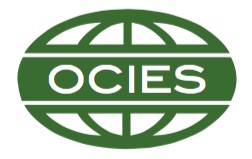Texts of Tagore and Tagore as Text: A Framework for Diversity and Inclusion in the Twenty-First Century
Keywords:
Diversity, Inclusion, Tagore, Texts, IndiaAbstract
Rabindranath Tagore (1861–1941) is primarily known worldwide as the first Asian poet to receive the Nobel Prize in literature, in 1913. He lived and died in colonial India as a British subject. However, any engagement with studies of Tagore would reveal that, despite his outstanding achievements in creative writing and music, he deserves to be remembered as the only poet of international standing who not only founded a self-funded university, but also designed a curriculum which radicalized traditional institutionalized education in colonial India. This essay endeavours to explore Tagore’s re-imagining of the process of institutionalized instruction and the objectives of education. Undoubtedly, the concepts and models of the teaching-learning process outlined by Tagore bear the stamp of a poet-philosopher who tried to distance himself from the public educational sector, epitomized in colonial times as the formidable University of Calcutta, under British administration. Historically, Tagore’s Visva-Bharati University at Santiniketan, obviously a private sector enterprise, is regarded as a unique experiment in inclusive education that debunks rote learning and fragmented knowledge, though its viability in the 21st century is open to debate.
Downloads
Published
Issue
Section
License
The International Education Journal: Comparative Perspectives is the official journal of the Oceania Comparative and International Education Society. The IEJ, (ISSN 1443-1475), publishes a general volume bi-annually in July and December and also publishes Special Editions occasionally. It is a free, open-access scholarly journal, managed by volunteers. There are no article processing charges, or any charges to authors.
In relation to intellectual property, as of 2020, the IEJ: CP claims only first publication rights; copyright of all work published in the journal remains with the authors under Creative Commons copyright license CC-BY-ND (4.0). Author(s) retain all rights to their works, ensuring that reference to the International Education Journal: Comparative Perspectives is clearly stated on any copies made or distribution. Submissions must not involve third parties with a claim to copyright, and be the sole work of the author(s). It is the responsibility of the author(s) to secure permission to reproduce photographs, illustrations, figures or tables. Single images, tables or figures can be re-used . If more than a single image or table are to be re-used authors must attribute first publication to IEJ: CP notify the IEJ: CP Editor. Authors may also make derivative works which are subject to these limitations.
See https://creativecommons.org/licenses/by-nd/4.0/ for more detail.
Re-distributed or used material must be referenced to the International Education Journal: Comparative Perspectives.
